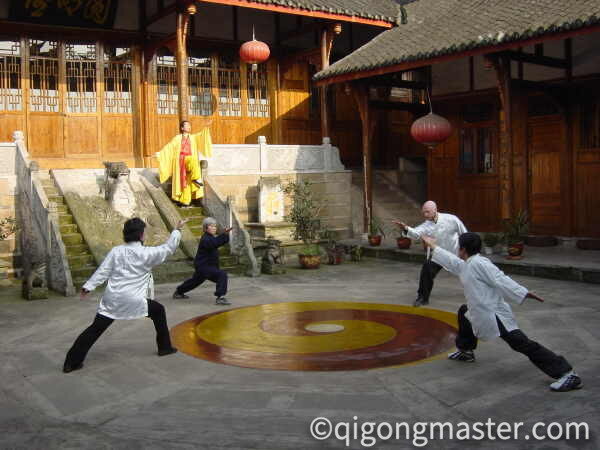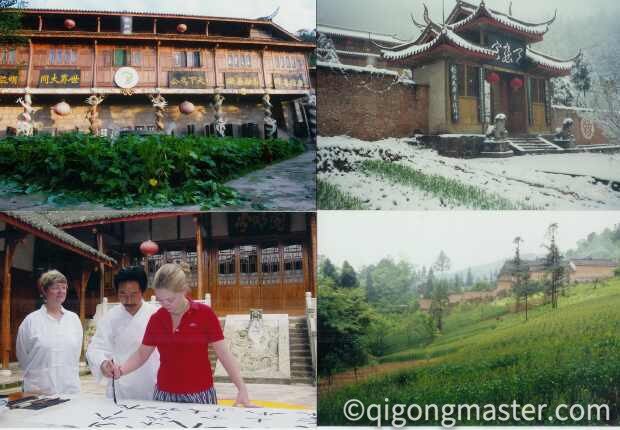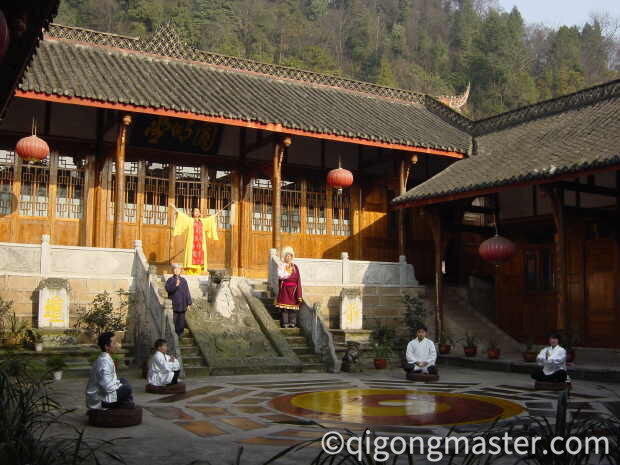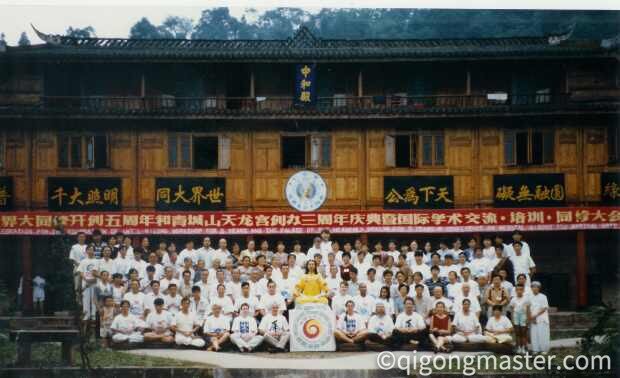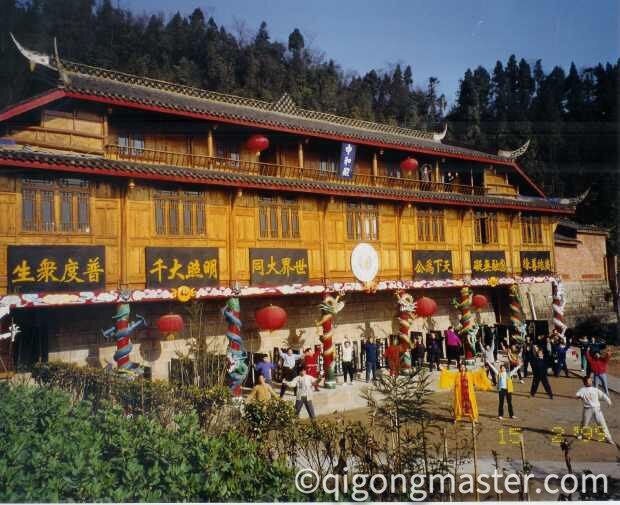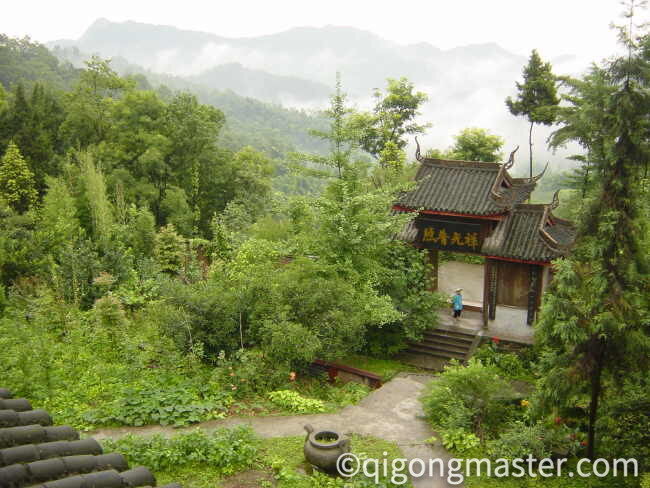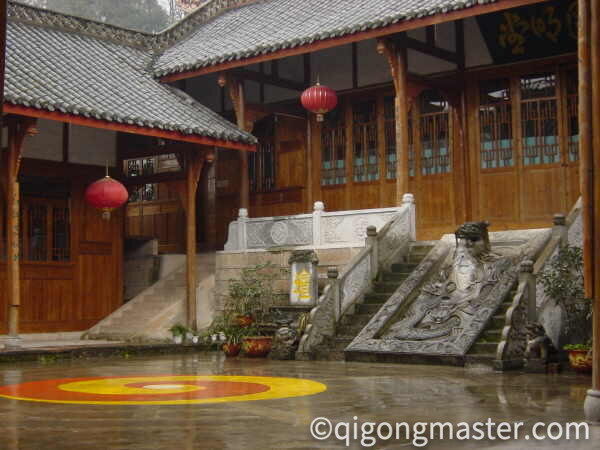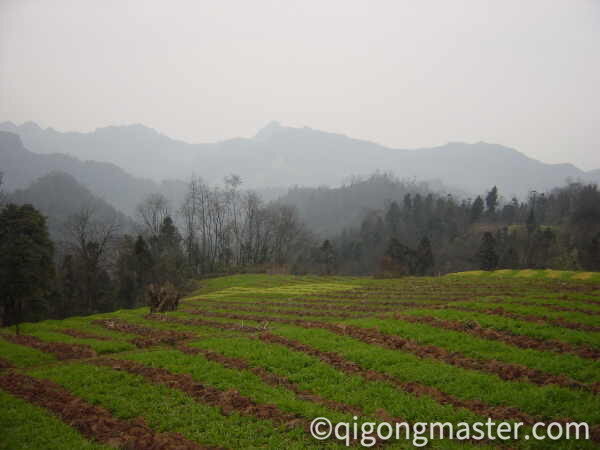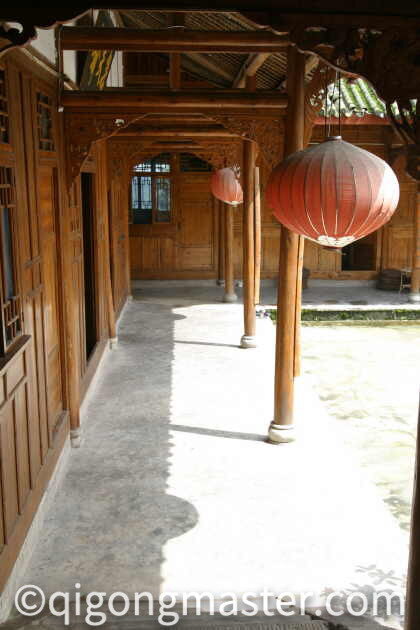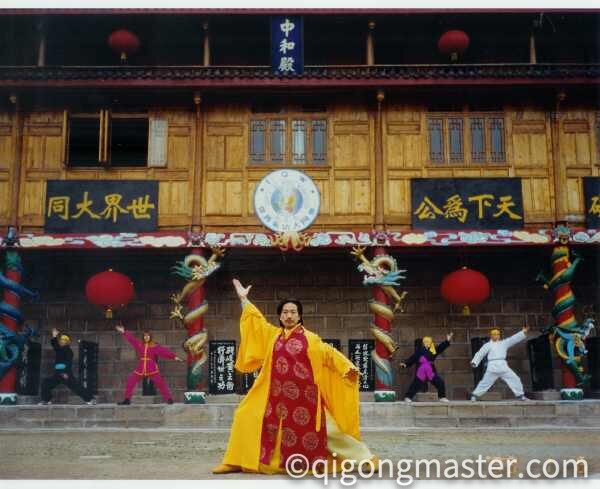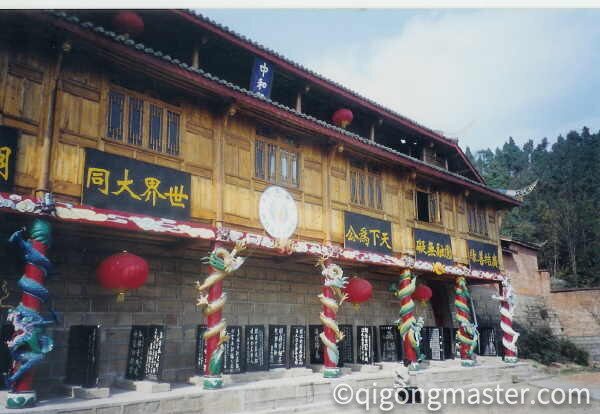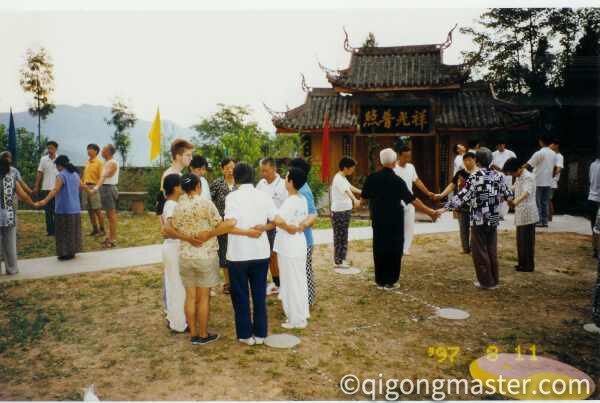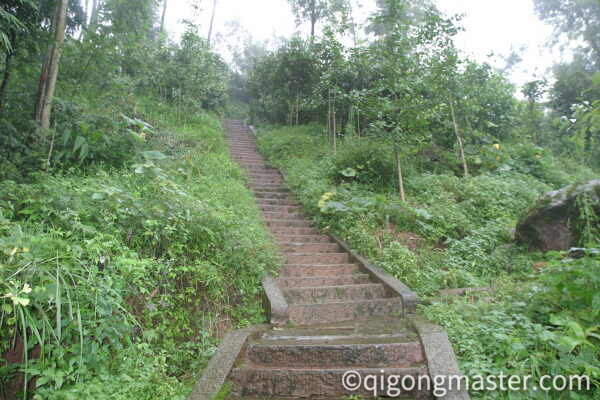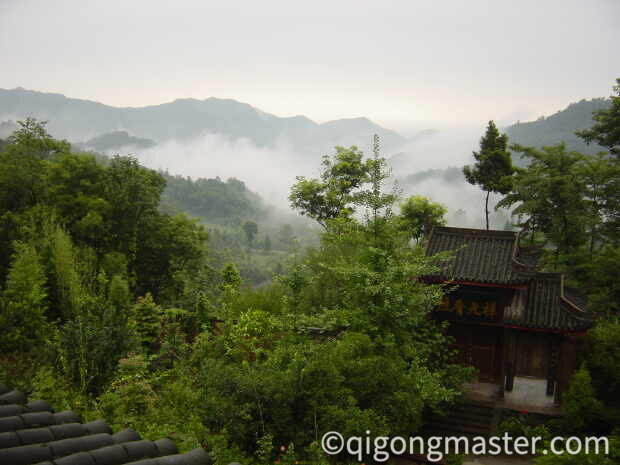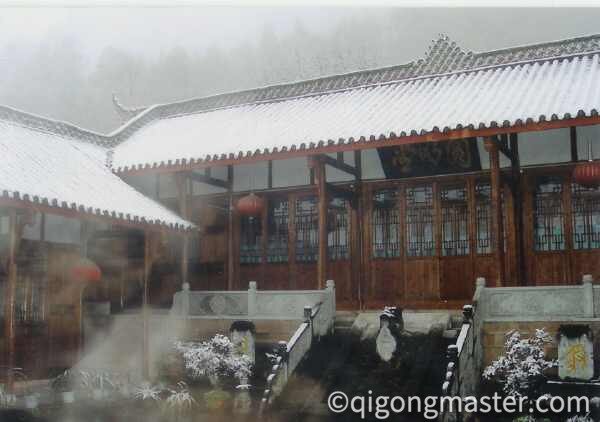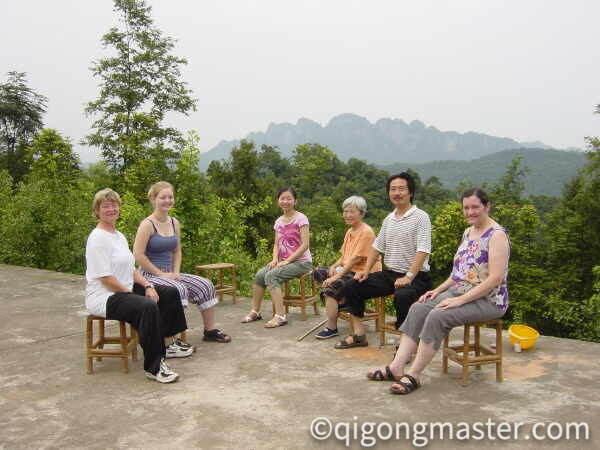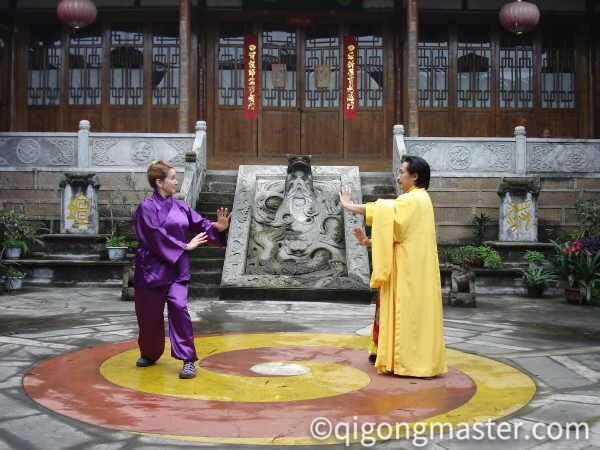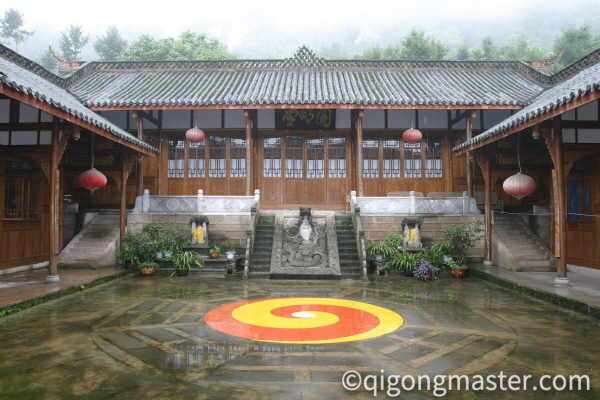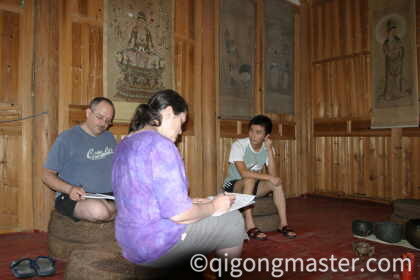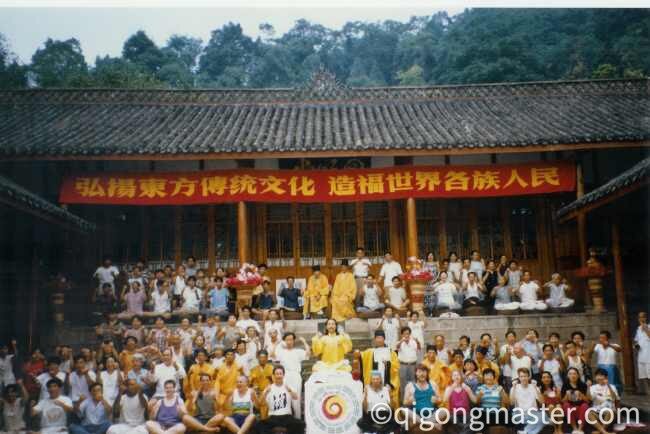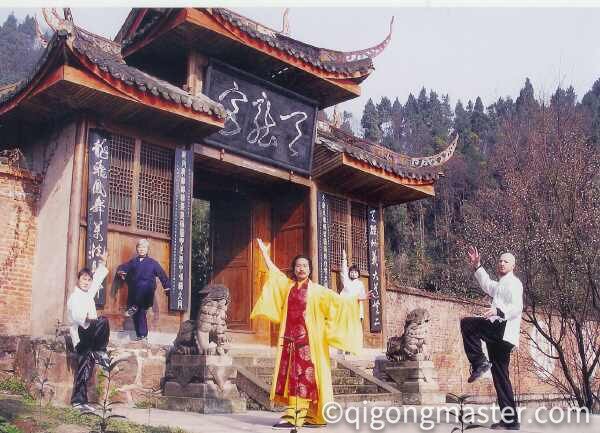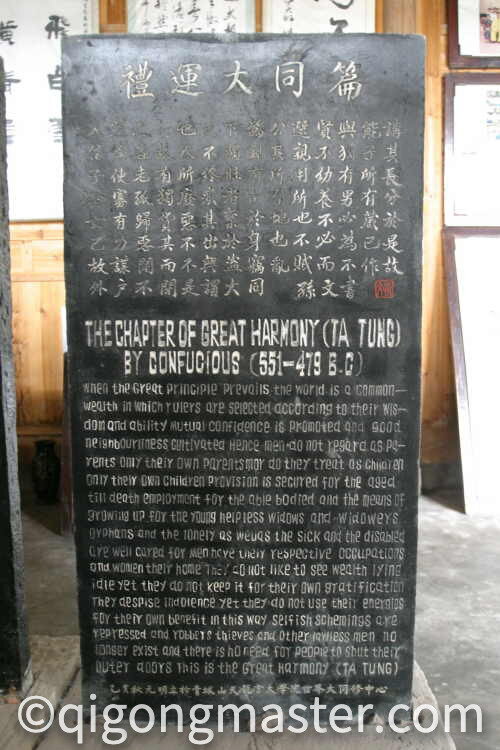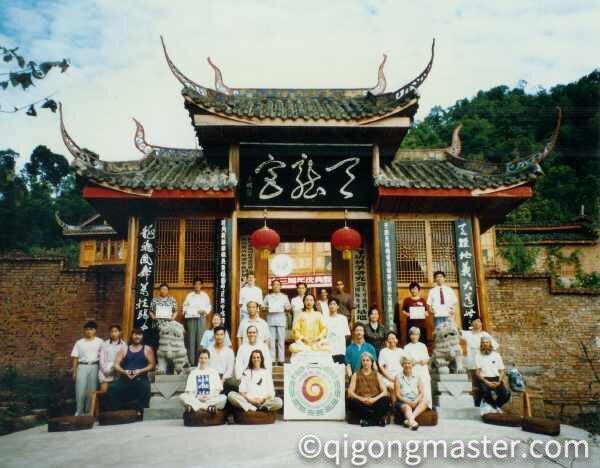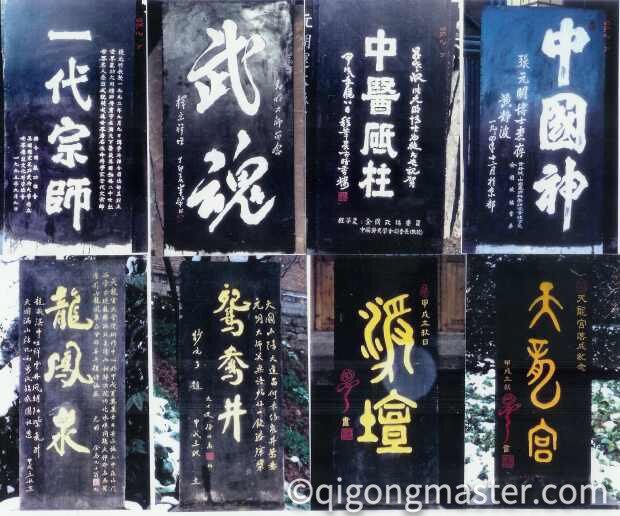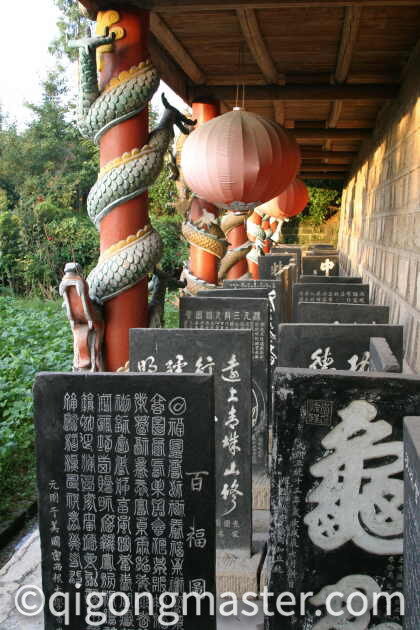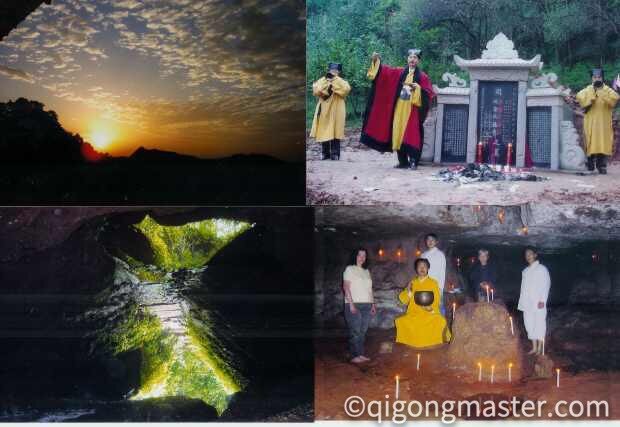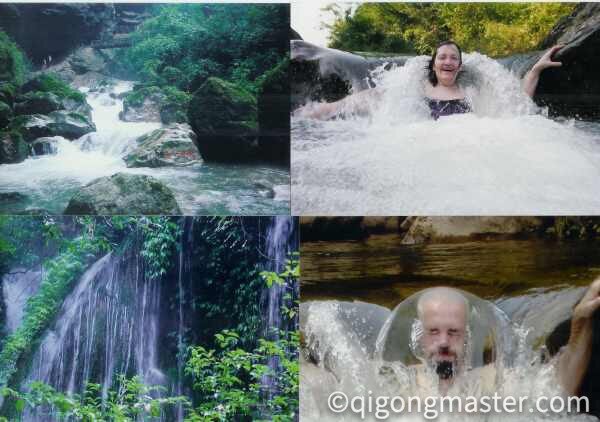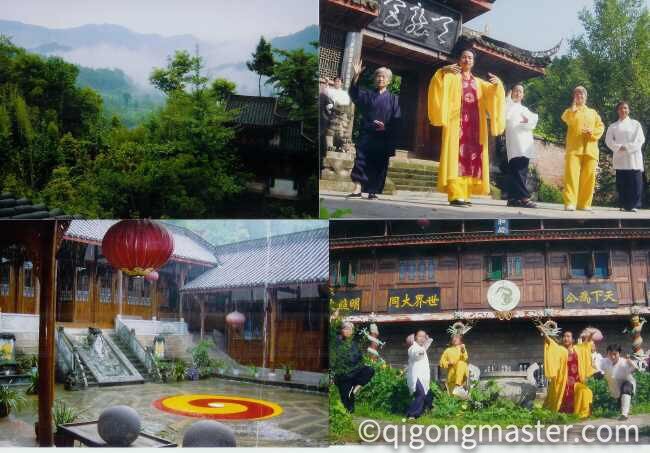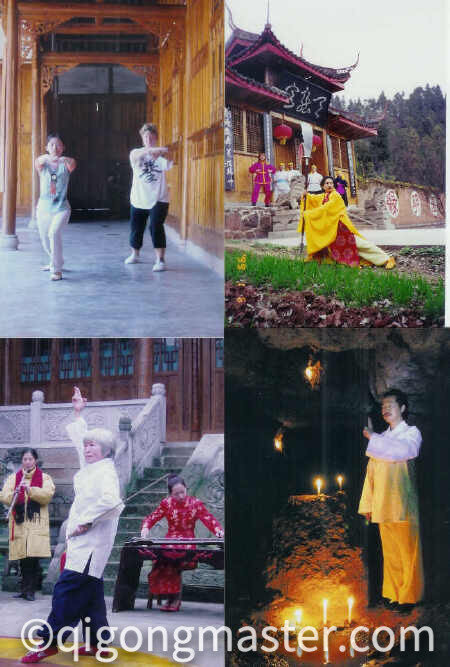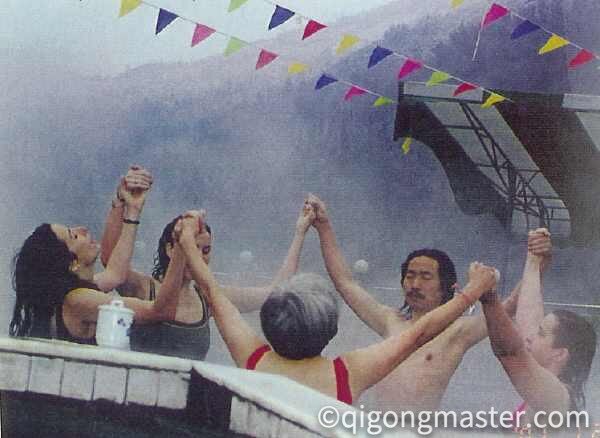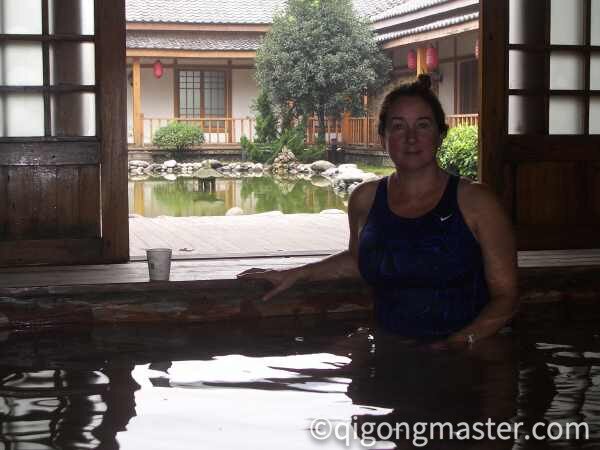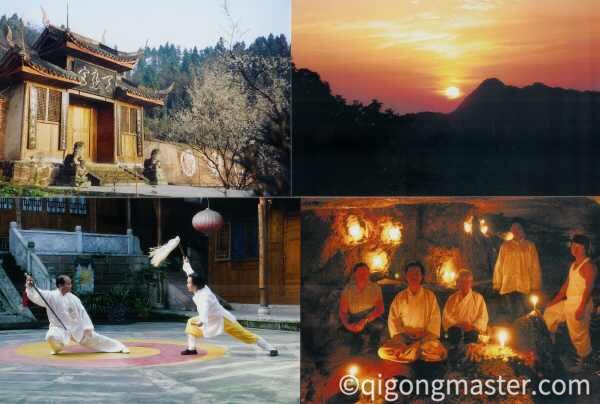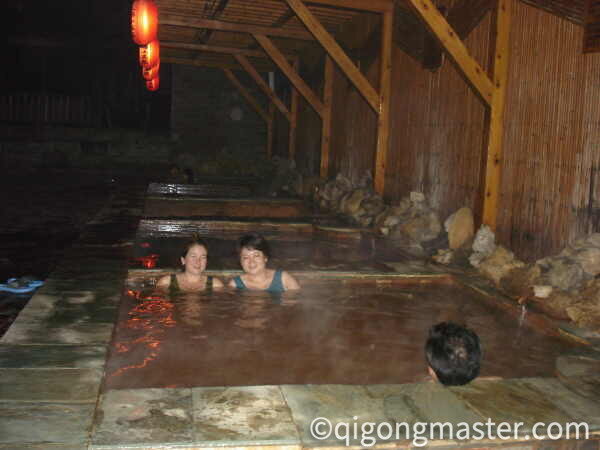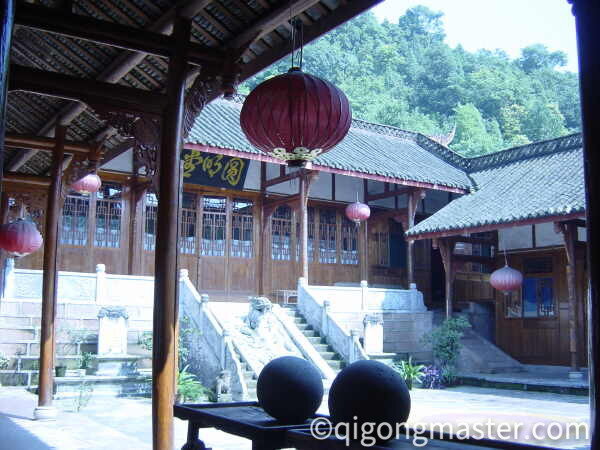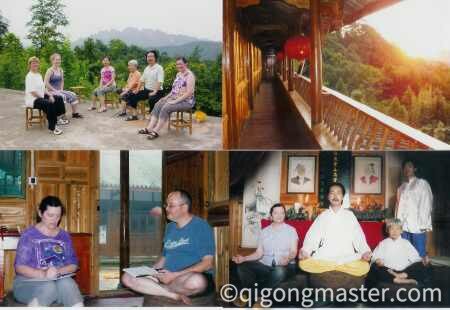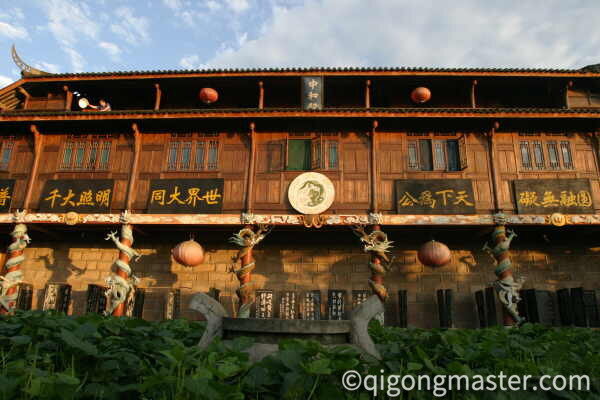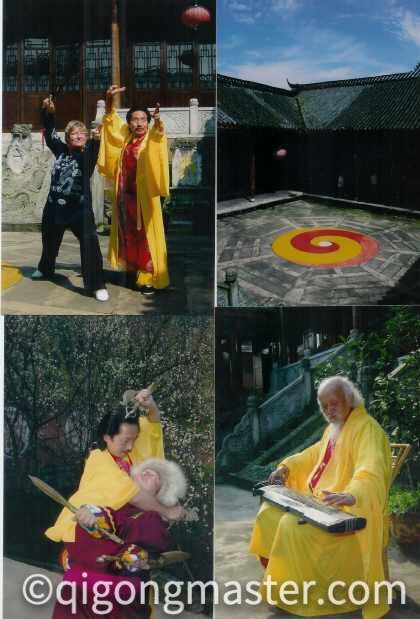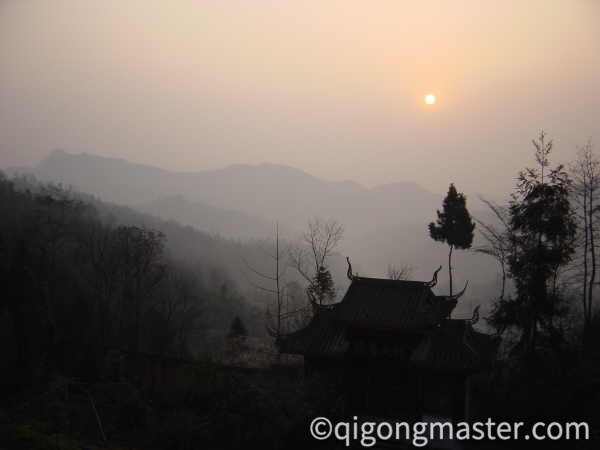Palace of the Celestial Dragon 天龍宮
For over a thousand years Mt. Qingcheng has been the heartland of ancient Daoism. The great sage Laozi, progenitor of Daoist philosophy, is said to have spent the last remaining years of his life communing with the Dao here. Similarly, Zhang Daoling was inspired to found religious Daoism and Chenzhen Kung Fu here. The Father of Chinese herbology, Sun Shimiao also did his herb research at Mt. Qingcheng. Many of the traditional arts of China have survived here unscathed, more so than anywhere else in China.
As an official lineage holder of various styles of internal Kung Fu and Qigong, as well as a Doctor of Traditional Chinese Medicine, Grandmaster Zhang built the center in the traditional atrium style of the surrounding monasteries in 1994. All natural materials from the surrounding hillside were used in its construction and the Center’s food is all grown organically in its surrounding gardens and fields.
Retreats at the Palace of the Celestial Dragon allow participants to experience a taste of sacred Chinese mountain life. With over 100,000 students the International Yuanming Qigong Kungfu Federation invites the world’s leading martial artists, painters, and calligraphers to teach at the Palace of the Celestial Dragon. Recently, the center, which is open year round, was featured on a PBS special on Chinese medicine. Twice a year Master Zhang leads students from abroad to study at the Center.
Mt. Qingcheng
Mt. Qingcheng is located at the Dujiangyan scenery spot of Chengdu, Sichuan province. It is a famous mountain of Taoism. Surrounded by countless peaks and densely covered by ancient trees whose branches reaching the sky, the mountain was named “Mt. Qingcheng” (Green Town in Chinese). The mountain includes two parts-the anterior Mt. Qingcheng and the posterior Mt. Qingcheng. The anterior mountain is famous for its beautiful scenery and numerous cultural and historic sites; while the posterior mountain is noted for its paradisiacal scenery, primitive and brilliant, gorgeous and mysterious.
Some famous scenic sites are: the Shangqing Palace, the Jianfu Palace, and the Tianshi Cave, etc. Among them, the Jianfu Palace, with extraordinary bearing, stands against the barranca under the Zhangren Peak. It was built in the Tang dynasty, and repaired for several times in the successive dynasties, now only two halls and three compounds are preserved. In the left side of the Jianfu Palace is the princess of Mingqing mansion site. Going west for 1 kilometer, visitors can find the “the natural pictures”. With the rocks uprightly standing, cloud and mist thickly wreathing, visitors often fancy that they are in pictures.
Two kilometers towards north comes the Tianshi Cave, the major temple of Mt. Qingcheng. According to legend, in the Eastern Han dynasty, Zhang Daolin had been here for preaching. In the Three Kings Palace, the main hall of the Tianshi Cave, the stone inscriptions of three kings of Tang dynasty were laid. The palace contains wood and stone tablets of past dynasties. The most famous include the Tang Xuanzong’s imperial decree and Yuefei’s handwriting of Zhu Geliang’s Chushibiao, etc. Coming out from Tianshi Cave and passing the Fangning Bridge, visitors can reach the Zhushi Palace; unceasingly walking straight north is Chaoyang Cave; out of it, climbers could see the Shangqing Palace, which situates on a high platform. The Shangqing Palace was first built in the Jin dynasty and the extant temple was built during the reign of Tongzhi in Qing dynasty. There are stone inscriptions as “the fifth famous mountain under the sun”, ” the first peak in Mt. Qingcheng” and so on in it. With its annually average temperature of 15 centigrade, Mt. Qingcheng belongs to humid subtropical monsoon climate. It is reputed as “Dong Tian Fu Di” (means wonderful mountain and happy place), “the fairyland on earth”.
Explore the Frequently Asked Questions Page Here.
